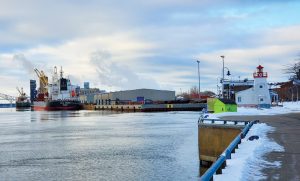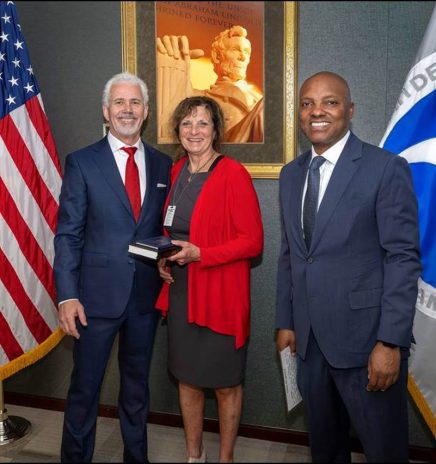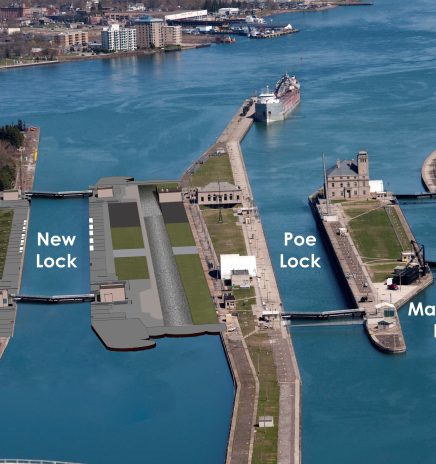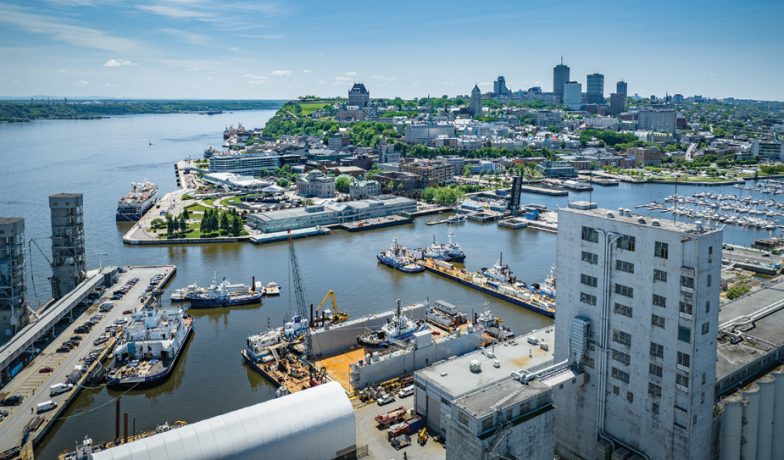Three-Port Collaboration To Strengthen St. Lawrence Corridor
Ports along this route handle a wide variety of commodities – containerized cargo, general cargo, dry bulk cargo and liquid products – as well as passenger cruises. And the St. Lawrence corridor stands to become even more important.
“With the multiplication of free trade agreements, the strong growth of e-commerce and the desire to make supply chains more resilient, the strategic role played by the St. Lawrence and its ports in our economy is set to increase,” said Frederic Lagace, communications director, Quebec Port Authority. Canadian ports all along the corridor are looking to increase their visibility and competitiveness. Now three have joined forces to promote the advantages of this corridor and highlight benefits to the Canadian economy.
Forming a Partnership
On June 14, the Port Authorities of Montreal, Quebec and Trois-Rivieres announced the creation of a working group to identify and facilitate the implementation of joint initiatives. Over their shared 250 kilometers (155 miles) of waterway, these three ports are jointly responsible for safe operation of traffic on the St. Lawrence River; they serve intersecting economic and social ecosystems; they rely on complementary intermodal platforms; they often have the same maritime partners. Combined, the three ports trade with more than 70 countries and handle approximately 65 to 75 million metric tons of cargo annually. That’s more than half the total cargo transported over the St. Lawrence by some 4,000 ships.
“The Ports of Montreal and Trois-Rivieres have already entered into a partnership agreement in 2017. Based on this experience, those two ports are looking forward to expanding the partnership to the Port of Quebec, said Lagace, who is also spokesperson for the collaboration. “The ports of Montreal, Quebec and Trois-Rivieres each have [common] general activities as well as specializations. They are already mutually complementary in many respects, which contributes to fostering collaboration.”
“We want to enter into partnerships for the good of the St. Lawrence,” said Gaetan Boivin, president and CEO of the Trois-Rivieres Port Authority. “What facilitates collaboration is our complementarity. The Ports of Montreal, Quebec and Trois-Rivieres each have their own expertise and specific roles in the supply chain. Increasing our collaboration will create synergies that will benefit the customers we serve and the communities in which we operate.”
Martin Imbleau, president and CEO of the Montreal Port Authority, agreed.
“There are opportunities for our ports and for our economy,” he said. “Global supply chains are being restructured. Shipping lines and import-export stakeholders are looking for the best routes at the best cost and want to accelerate the decarbonization of maritime transport.”
The three port authorities agree – the time has come for strategic alliances to strengthen the St. Lawrence corridor’s attractiveness as Canada’s, and indeed North America’s, leading commercial corridor.
A Global Vision
The idea of an alliance among these three ports had been raised in 2016, but had not been acted upon. “We realized in recent years that the trends we see are similar, and the challenges we face are also similar,” Boivin said. “We also examined what is being done elsewhere in the world, and we found that our challenge on the St. Lawrence is to move from a local vision to a vision that is more global.”
The purpose of the working group, explained Lagace, is “first to identify possible collaborations within the current framework and benefits we can draw from them; then, to identify collaborations that would be appropriate in a new framework and benefits that this could bring to our clients, our communities and the Quebec and Canadian economy. Our desire is to increase the attractiveness and competitiveness of the St. Lawrence River corridor and to contribute more significantly to the decarbonization of supply chains.”
The incentive to collaborate stems from the reorganization of supply chains; the challenge of climate change; competition from East Coast ports such as Boston, New York, Philadelphia; and the announced intention of the government of Canada to modernize the ports.
“Being more strategically positioned in this changing environment is in the best interest of our customers and the communities we serve, Lagace said.
The working group will explore different solutions, such as the connection between the ports and the freight and transport networks, the exchange of expertise and the compatibility of technological systems.

“We know, for example, that we can share information on subjects such as maritime operations, port logistics or safety and security, and we will make the most of this knowledge, but we also know that we cannot, within the current framework, coordinate operations, invest in joint projects or develop joint service offerings,” Lagace said. “We want to explore such approaches, and others, to see the benefits that could be derived from them.”
So far, the collaboration has not received a formal name. Naming will be a task of the working group, which is under direct and equal responsibility of the three port authority CEOs.
“The world’s major shipping lines are looking for the greenest routes,” Lagace said. This demand will likely grow and be a competitive issue for ports and carriers, as businesses and citizens are increasingly sensitive to this aspect of commerce.
“More than 80 percent of trade worldwide is by ship, and the St. Lawrence-Great Lakes axis is Canada’s most important trade corridor,” said Mario Girard, president and CEO of the Quebec Port Authority. “Our infrastructures are vital to our economy, with major importance along the St. Lawrence, but of minor importance when it comes to global supply chains. With this new relationship, we want to develop some of the most sustainable and eco-responsible logistics and supply chains globally and interprovincially.”
“Sustainability of supply chains is a key issue in the fight against climate change. It is a priority aspect of our collaboration,” Lagace said. “We would like to coordinate our actions, adopt common practices and develop ways to reduce the ecological footprint of our port operations and contribute to more environmentally responsible supply chains. Our collaboration could also lead to more efficient ship-train-truck intermodality to reduce emissions. This is a very promising area of collaboration.”
Immediate Issues
The Montreal-Quebec-Trois-Rivieres working group is set to issue its recommendations by the end of 2022. Since the government of Canada has announced its intention to modernize the Canada Marine Act – the legislation governing the operation of Canadian port authorities – the group’s findings may also be used to inform the work of Transport Canada.
Lagace concluded, “We are convinced that positioning the St. Lawrence as a sustainable shipping corridor will contribute to the attractiveness of our ports, facilitate our exchanges with the world and contribute to the dynamism of our economy.”

J.M. (Mike) McCoshen Sworn in as GLS Administrator
The United States Department of Transportation has named J.M. (Mike) McCoshen as administrator of the Great Lakes St. Lawrence Seaway Development Corporation (GLS). McCoshen was sworn in on Monday, June... Read More

Remaining Phase 3 Options Awarded for New Lock at the Soo
U.S. Army Corps of Engineers, Detroit District’s New Lock at the Soo project in Sault Ste. Marie, Michigan, has awarded a total of $95.3 million for remaining Phase 3 options... Read More




